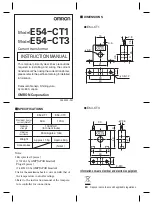
Micrel
MICRF506BML/YML
XCOtune Start-up
Time
(µs)
0 590
1 590
2 700
4 700
8 810
16 1140
31 2050
July 2006
17
M9999-092904
+1 408-944-0800
Table 7. Typical values with C
EXT
= 1.5pF
If an external reference is used instead of a crystal,
the signal shall be applied to pin 24, XTALOUT. Due
to internal DC setting in the XCO, an AC coupling is
recommended to be used between the external
reference and the XTALOUT-pin.
VCO
A6..A0 D7 D6 D5
D4
D3
D2
D1
D0
0000011 ‘1’ ‘1’ ‘0’ VCO_IB2
VCO_IB1
VCO_IB0 VCO_freq1 VCO_freq0
The VCO has no external components. If has three
bit to set the bias current and two bit to set the VCO
frequency. These five bit are set by the RF
frequency, as follows:
RF freq.
VCO_IB2
VCO_IB1
VCO_IB0 VCO_freq1 VCO_freq0
410MHz 1 0 1 0 1
410-423MHz 1
0
1
0
1
423-436MHz 1
0
0
1
0
436-450MHz 0
1
1
1
1
Table 8. VCO Bit Setting
The bias bit will optimize the phase noise, and the
frequency bit will control a capacitor bank in the
VCO. The tuning range, the RF frequency versus
varactor voltage, is dependent on the VCO
frequency setting, and can be shown in Figure 7.
When the tuning voltage is in the range from 0.9V to
1.4V, the VCO gain is at its maximum, approximately
32 to 35MHz/V. It is recommended that the varactor
voltage stays in this range.
The input capacitance at the varactor pin must be
taken into consideration when designing the PLL
loop filter. This is most critical when designing a loop
filter with high bandwidth, which gives relatively
small component values. The input capacitance is
approximately 6pF.
VCO frequency gain, Vdd=2.5V
380
390
400
410
420
430
440
450
460
470
480
0
0.4
0.8
1.2
1.6
2
2.4
V_varactor [V]
Freq [MHz]
11
10
01
00
Figure 7. RF Frequency vs. Varactor Voltage
and VCO Frequency bit (V
DD
= 2.25V)
















































